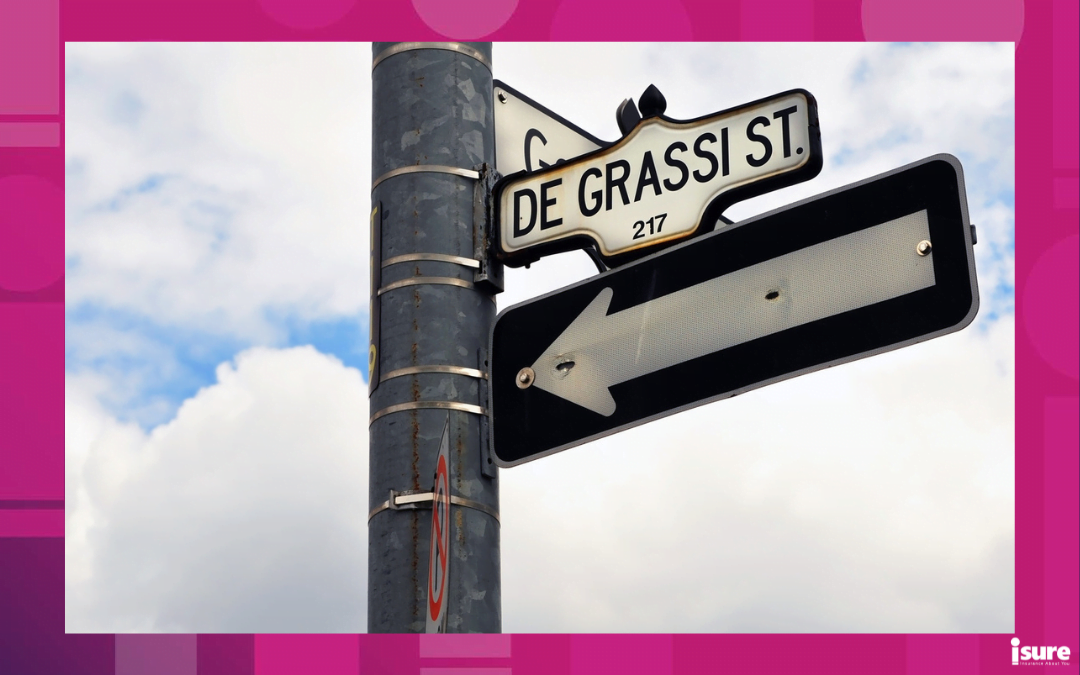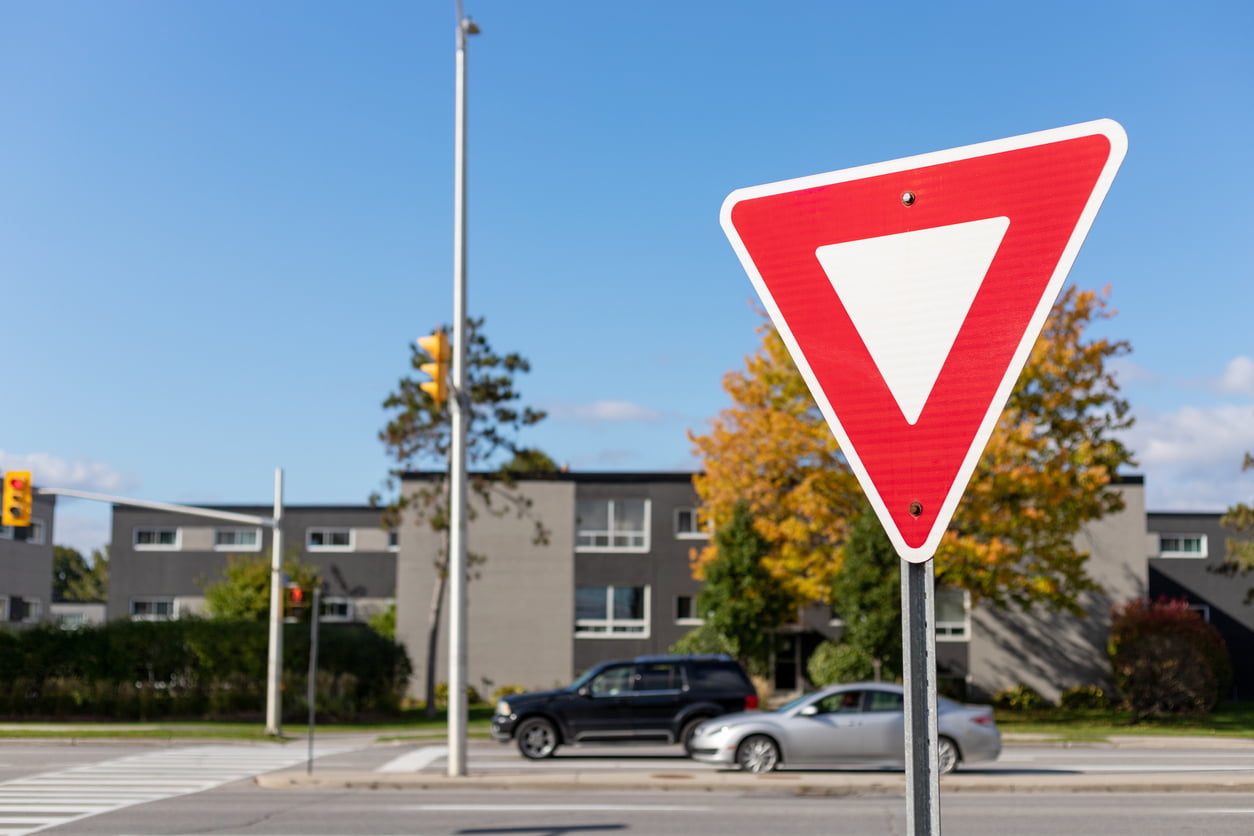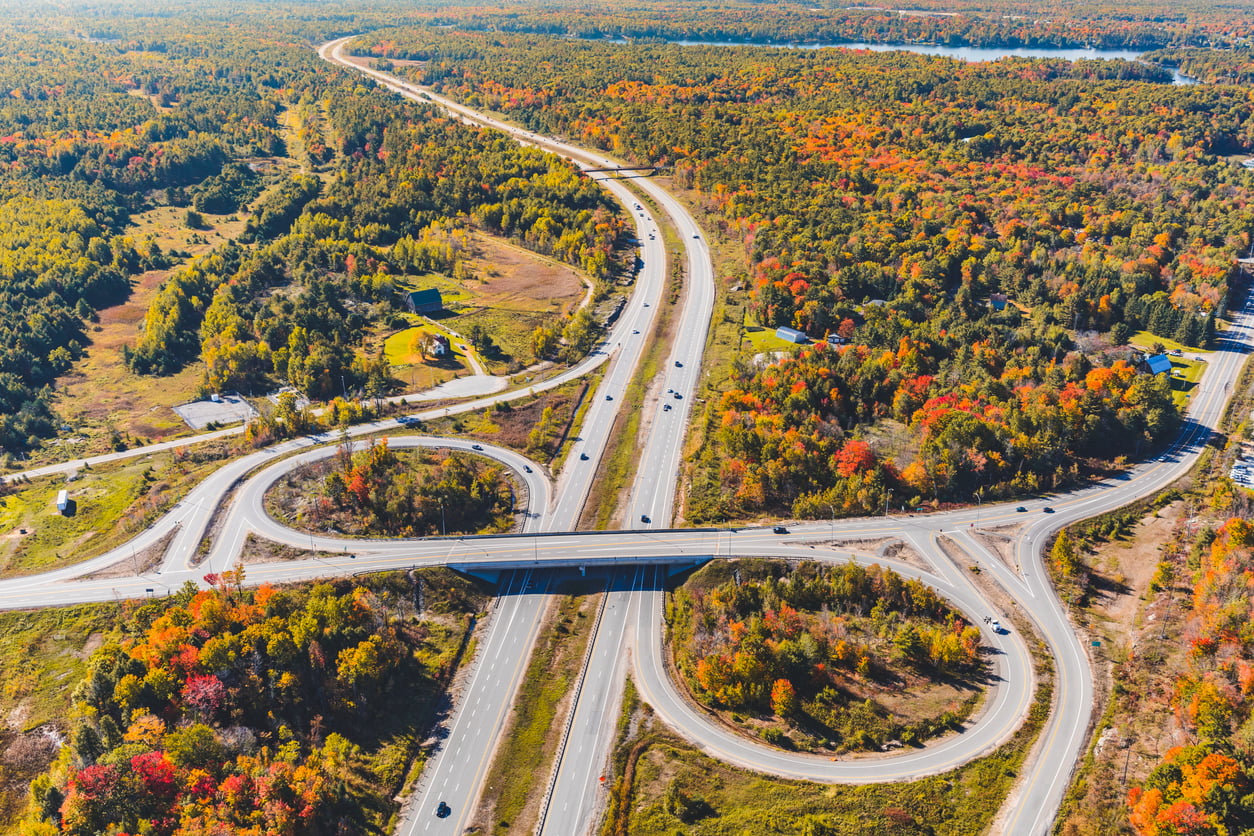One-way roads can be very confusing and often cause accidents at higher rates than two-way roads. If you’re studying for your driver’s exam or a veteran driver looking to brush up on your road rules, understanding how to identify a one-way road is vital to navigating many of Ontario’s urban through-fares. While they may seem confusing, or even unnecessary, they can aid in directing traffic flow through crowded areas when used correctly. We have everything you need to know about one-way streets, their benefits and drawbacks, how they work, and how to recognize these signs while driving.
What are one-way streets?
A one-way street is a street facilitating only one-way traffic. One-way streets typically result in higher traffic flow, as you can avoid encountering oncoming traffic or turns through oncoming traffic. Drivers travelling in the wrong direction of a one-way sign run the risk of causing a head-on collision with another driver. Broken white lines separate traffic lanes on one-way streets. You will not see yellow markings on a one-way street. When driving on one-way streets with multi-lanes, always choose the lane with fewest hazards.
What do one-way street signs look like?
One-way road signs are usually small in height and rectangular in size, with a black background and a white arrow indicating which way traffic should flow. These signs warn drivers not to make any left turns or U-turns into the one-way street at an intersection. They also come in a larger rectangular version with a white background and black arrow. Both signs are labeled ‘ONE WAY’ in capitalized black letters.


There sometimes are “Do Not Enter” signs to stop you from going down them the wrong way (pictured below).

Some cities use “Do Not Enter” signs for traffic calming and limiting access from that intersection, but it might not be a “one way street” unless marked as such.
Why are one-way roads important?
Cities, like Toronto, have long been home to one-way streets because transportation engineers believe they move cars more efficiently than two-way streets do. That’s largely the case because one-way streets eliminate tough left turns through oncoming traffic. Any way around conflicting lefts, on two-way streets, creates congestion. Left-turn lanes take up space, and guarded signals take up time.
As opposed to two-way roads, one-way streets are a great way for urban planners to:
- Reduce congestion in popular tourist areas
- Lower the incidence of pedestrian accidents
- Allow for better parking
- Improve foot traffic capacity in high-volume business districts within the city
One-way roads are important for safety, traffic flow, and parking capacity in most city areas. This makes it a popular option when planning vehicular flow for city parades, festivals, and other special events, as well.
How to determine if a street is one-way or two-way
If you are a new driver, or perhaps travelling to a new city for your summer vacation, here are a few tips to help you spot any one-way street:
1. Look for warning street signs: “One-Way” or “Do Not Enter”
These signs are easy to spot, as mentioned above. ‘Do Not Enter’ signs often mean “the one-way street starts here”. There may also be signs prohibiting turns, such as “No Right Turn”, or an arrow symbol on a traffic signal, when the street is one-way coming toward your location.
2. Look for parked cars
Parked cars often show directions of travel on a street. Look for traffic flow and parked cars in the direction you wish to go. Cars parked the same direction on both sides of the street clearly indicate the direction of travel, and that it is a one-way street.
Street lines should come in two colours: white and yellow. If a street only has white lines on either side (with no yellow lines), this generally means the street is a one-way street. However, that doesn’t tell you the direction of travel down this street.
3. Glance all the way down the street to see if you see any traffic signal lights
Watch for the backs of traffic lights. Glance at the signal lights in the opposite direction to confirm. If you see only the back of the signal lights, the street is one-way, and going the other way. Also, keep a lookout for blinking or steady traffic control device lights. This is a common indicator that this is a two-way street.
4. Look at a street map
Look for arrows on maps, as arrows designate the presence of one-way streets and the direction of travel on that street. No arrows mean it’s a good possibility this street is a two-way street.
Common one-way street rules you should know
Emergency vehicles: On one-way roads, you may also slow down, signal left and move over to the left and stop when it’s safe to do so. In intersections, regardless of which lane or direction the emergency vehicle is coming from, all vehicles must yield to the emergency vehicle. Do not stop or pull over in the intersection.
Turning left on a red light: You may turn left from a one-way road to a one-way road on a red light after coming to a complete stop and making sure the way is clear. Yield to pedestrians and traffic.
Wrong way driver: If you encounter an oncoming vehicle (going the wrong way on a one-way street), don’t panic. Slow down and try to get the drivers attention by flashing your headlights and honking your horn loudly. If this does not work, pull over and let it pass.
Exiting a one-way street: Look for signs which will indicate whether you are turning into a one-way or a two-way street. Use right lanes for making right turns and left lanes for making left turns. U-turns are not allowed on one-way streets.

Downsides to one-way streets
1. Extra travel time and distance
The speed of traffic and flow is usually higher on one-way streets, as there’s little reason for cars to slow down. But flow doesn’t take into account the fact that travelling through one-way street systems often means taking a circuitous route. This means navigating through one-way intersections, which adds distance to every trip. You can move more vehicles through a roadway, but if they have to travel a longer distance, in the end, you have actually more people on the road, as it takes longer to leave it.
2. Friction
Friction is the term used by transportation planners for the street activity that slows the traffic down:
- People crossing on foot at an intersection
- A car holding up traffic as it backs into a parking space on the road
- Buses that stop often and make you wait to get around them.
3. Prioritizing our carbon footprint
One-way, low-friction roads promote higher speeds. However, they are uncomfortable for people who want to get around by walking and cycling in order to stay fit and shrink their carbon footprint. Many people want to be active, and reduce pollution and greenhouse gases from vehicles. As a result, many cities have shed their one-way arterial roads downtown. In Ottawa, planners are considering the two-way conversion of several streets in the shadow of Parliament Hill. Two-way roads help to ‘normalize’ the streets. This will slow down traffic, create a greater choice of routes and provide a more inviting address for residential and commercial investment. Not to mention, improving safety for pedestrians and cyclists.
4. Low cost to convert to two-way streets
To help combat the extra commute time and travel, many urban planners recommend in larger cities, with longer trip distances, a shift to two-way systems that ban left turns entirely. Since such a change carries a very low implementation cost, many cities in the U.S and Canada have begun to implement it. St. Catharines, Ontario has been shutting down their one-way streets since the 1990s.
5. Cost to tourism
Another point supporters of the change site is the fact that “the highway-like one-way streets” are being frequently used by large trucks and transportation vehicles. This type of vehicle creates a lot of noise pollution and certainly does not create a friendly and peaceful environment for people cycling and using sidewalks. Decreased foot traffic and cycling in cities can greatly damage its accessibility and affect its tourism industry.
So far, Toronto has been one of the few major North American cities to have resisted the siren song of one-way streets — a fact many credit with maintaining the city’s still-vibrant downtown. Nevertheless, it has also snarled the city’s core into a mess of left-turn lanes and backed-up streetcars. Conceivably, Toronto can convert many of its four-lane two-ways into three-lane one-ways without any increase in congestion. It will open the door to separated bike lanes, dedicated streetcar lanes, wider sidewalks, with synchronized traffic lights finally becoming a reality.
For more information on road signs, visit ontario.ca. As always, if you have any questions or concerns regarding your auto policy, contact one of our isure brokers today.




